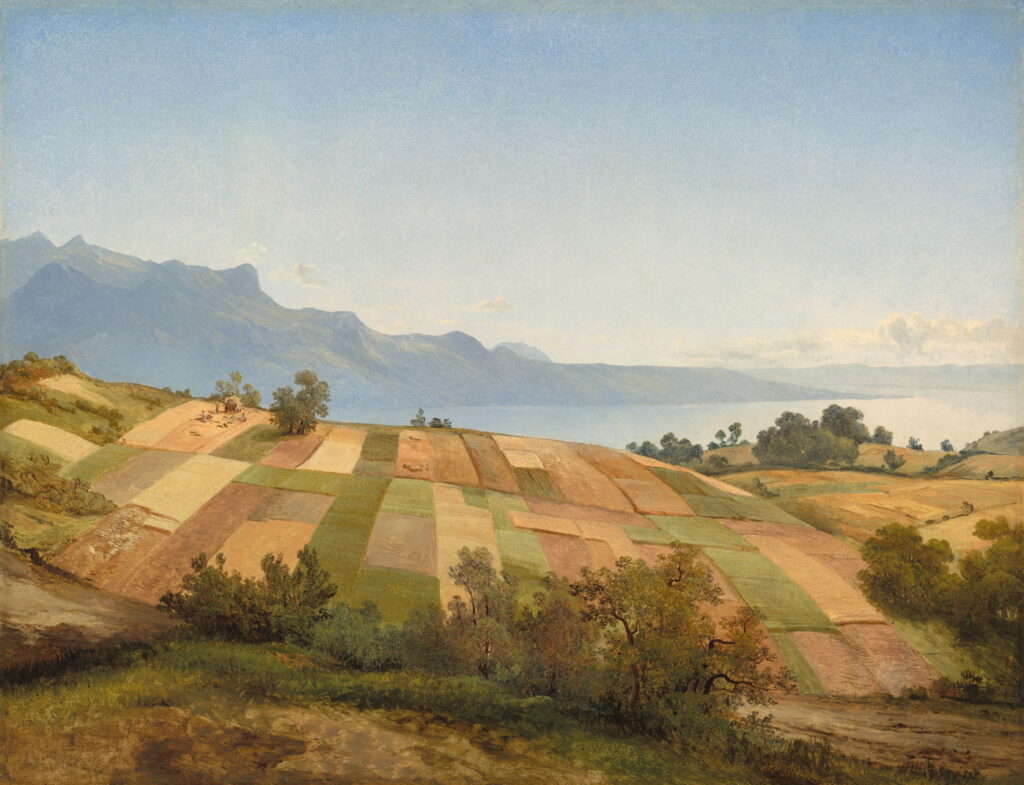The Real Country: 9 Courses and crop rotation

Ancient farmers discovered that repeatedly growing the same crop on the same plot of land soon led to falling yields and crop failure. We now understand this is the result of falling soil fertility: as successive harvests extract nitrogen and other essentials from the soil, without their replenishment there’s none for the plants to incorporate into their fruit or seed. Although animal fertiliser could compensate to some extent, the only solution was to ‘rest’ that land, to allow its soil fertility to be restored.
In southern Europe, including lands bordering the Mediterranean, crop rotation had been adopted by classical times, and was described by the Roman poet Virgil. This typically followed a two-year cycle:
In one year, the plot would be ploughed and sown, sometimes in both Spring and autumn, to grow crops for harvest.
The following year, that plot would be left unused, lying fallow.
As a result, at any time half the arable land would be productive, and half fallow and without a crop.
In northern Europe, a three-year cycle developed during the Middle Ages and later. This might run:
In one year, the plot would be ploughed and sown in the autumn with a winter grain crop.
The following year, that plot would be sown in the early Spring, with a grain or forage crop, or legumes (peas or beans).
The third year, that plot would left fallow until the autumn, when it started the cycle again with autumn ploughing.
This is reflected in a different pattern in arable land, with only a third of it being left fallow at any time.
During the seventeenth century, farmers in the Low Countries appear to have adopted more elaborate rotations, and those were imported to England as the Norfolk Four-Course Rotation in the following century. In this:
The first year brought a wheat crop, sown in the Spring and harvested at the end of summer.
The second year brought roots, such as swedes or turnips, normally used to feed cattle, which grazed the land and enriched it with manure.
The third year brought barley or oats, sown in the Spring and harvested at the end of summer.
The fourth and final year the plot was rested with grass and clover, again used to graze cattle which enriched it with manure.
This depended on integrating livestock production with arable farming, by adding cows to the sheep-corn system, which had become increasingly popular over this period.
One way to assess this is in paintings of farmed countryside, looking at the patterns of usage in fields. I show a small selection of examples here.
Pieter Bruegel the Elder (c 1525–1569), The Harvesters (1565), oil on panel, 119 x 162 cm, Metropolitan Museum of Art, New York, NY. Wikimedia Commons.
In Pieter Bruegel the Elder’s The Harvesters from 1565, much of the land visible is devoted to a single wheat crop, sown at the same time, and harvested together at the end of the summer. Some fields on the lower ground, closer to the town and estuary in the distance, are still green, though, suggesting they may be pasture being grazed during their fallow year.
John Crome (1768–1821), Mousehold Heath, Norwich (c 1818-20), oil on canvas, 109.9 x 181 cm, The Tate Gallery (Purchased 1863), London. © The Tate Gallery and Photographic Rights © Tate (2021), CC-BY-NC-ND 3.0 (Unported), https://www.tate.org.uk/art/artworks/crome-mousehold-heath-norwich-n00689
At the same time as crop rotations were being developed, land was being enclosed and its use transformed from communal grazing for livestock to arable fields. John Crome captures this in this painting of Mousehold Heath, Norwich (c 1818-20), showing the low rolling land to the north-east of the city which had been open heath and common land until the late eighteenth century. By 1810, much of it had been enclosed and ploughed up for agriculture.
Alexandre Calame (1810–1864), Swiss Landscape (c 1830), oil on paper mounted on canvas, 40 × 52 cm, National Gallery of Art, Washington, DC. Wikimedia Commons.
At about the same time, Alexandre Calame’s Swiss Landscape shows the shore of one of the country’s large lakes, probably Lake Geneva, with much smaller plots of land within large open fields, and a range of different crops being cultivated. This is more typical of the older sub-divided fields close to villages during earlier centuries in England.
Thomas Seddon (1821–1856), Léhon, from Mont Parnasse, Brittany (1853), oil on canvas, 57.5 x 74.9 cm, Museo de Arte de Ponce, Ponce, Puerto Rico. Wikimedia Commons.
By 1853, when the Pre-Raphaelite landscape artist Thomas Seddon visited Brittany and painted Léhon, from Mont Parnasse, Brittany, this small village had retained similar small plots being farmed in different ways, almost like the allotment gardens that developed around cities at this time.
Camille Pissarro (1830–1903), Côte de Jalais, Pontoise (1867), oil on canvas, 87 x 114.9 cm, Metropolitan Museum of Art, New York, NY. Wikimedia Commons.
Fields shown on the side of Les Jalais in Camille Pissarro’s Côte de Jalais, Pontoise from 1867 are divided into larger strips, and are at different stages of cultivation. Some are still earth brown following ploughing, others are green, and some may be ready to harvest. These appear to be in a longer crop rotation, perhaps four-course.
Paul Cézanne (1839-1906), Hillside in Provence (1890-92), oil on canvas, 63.5 x 79.4 cm, The National Gallery (Bought, Courtauld Fund, 1926), London. Courtesy of and © The National Gallery, London.
Although the classical two-year cycle was retained for longer in southern France, by 1890-92 when Paul Cézanne painted this Hillside in Provence, the pattern of colour in the fields makes it more likely that a three-year or longer rotation was in use.
Percy Shakespeare (1906–1943), December on the Downs, Wartime (c 1939-44), oil on canvas, 62.5 x 92.5 cm, location not known. Wikimedia Commons.
By the early twentieth century, most farmland in England had been enclosed, but the fields in Percy Shakespeare’s painting of December on the Downs, Wartime, from the period 1939-44, remain open and still in use for a sheep-wheat system.
Perhaps the lesson here is that accounts of land use and crop rotations are too generalised to reflect the rich variety of local farming methods. As I have so far concentrated on arable and sheep farming, in the next article I’ll look at cattle and milk production.


